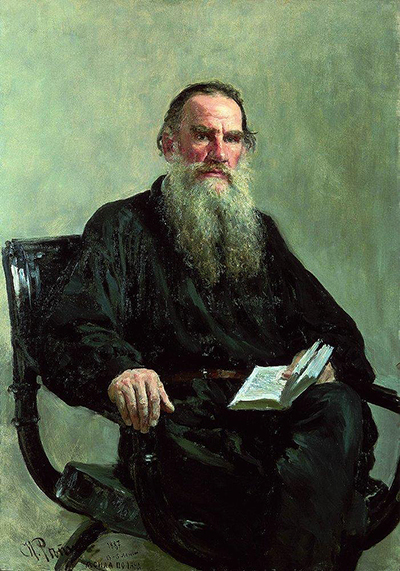 Buy Art Prints Now
Buy Art Prints Nowfrom Amazon
* As an Amazon Associate, and partner with Google Adsense and Ezoic, I earn from qualifying purchases.
This painting titled Portrait of Leo Tolstoy by Ilya Repin hangs in the State Tretyakov Gallery in Moscow, Russia. The portrait is the first of a number Repin painted of Tolstoy. Even more drawings and sketches of Tolstoy are also attributed to Ilya Repin.
Repin painted the portrait in 1887, using oil on canvas. At the time of painting, Repin was approximately 43 years old. His friend Leo Tolstoy was either 58 or 59. Ilya Repin became friends with Leo Tolstoy when both men were famous in their own right. Each of them used realism to create art and literature. Bringing these factors together make this portrait compelling viewing. It stands as a work of art and the documentation of the relationship between two great Russian artists. The two did not always agree, which lends an artistic tension to the work.
Composition
This particular portrait depicts Tolstoy, with a full grey flowing beard and moustache, with a darker slightly curly head of hair. He is seated in a curved wooden chair, carved from dark ebony-coloured wood. The wood has been polished to a sheen. The great writer’s left leg is crossed over his right leg and he holds an open book in his left hand. His thumb rests on the open page as if to keep his place in the text. His right-hand rests on the arm of the chair, fingers curled over the curved arm, pointing down to the floor.
Mirroring the dark wooden chair, Tolstoy is dressed in black clothing. His shirt is of the traditional Russian tunic style with full blouson arms. A thin brown leather belt gathers the shirt at the waist. The bottom edge of the portrait ends below his knees. The blue, grey and cream background is indistinct. The portrait was painted at Tolstoy's birthplace and home Yasnaya Polyana, now a museum. It is believed that the work took only three days to complete.
Leo Tolstoy's gaze is direct but not confrontational. Slight furrows play on his forehead and above the bridge of his nose. It is the look of someone in repose, with the furrows suggesting thinking. The portrait has the quality of the subject who was reading and has stopped to think. This may reflect the context of Tolstoy’s intellectual life at the time of the sitting. Around the point that Repin was painting the portrait, Tolstoy was going through a period of transition as a radical thinker. His philosophy was becoming one that rejected his wealth and renown. He was also considering relinquishing his copyrights to his work.
This intellectual revolution had, in turn, badly affected his relationship with his wife. The Tolstoys had 13 children together so perhaps his new negative relationship with their financial fortunes had good reason to concern Sophia Tolstoy. This portrait seems to capture the artist at a time of serious reflection. A writer, but also a reader, absorbing new ideas.
This particular portrait is an accomplished and astonishing study of Tolstoy’s face. Such detail in the expression in the eyes, the heavy brows and the general portrayal of maturity allow the viewer to project themselves into inner workings of the writer’s mind. It could be said that Repin was the artist who could read Tolstoy’s face, even as Tolstoy takes a moment to think before turning the page of his painted book.
Artistic Influences
To create such detailed works, Repin often made many preliminary studies and sketches. Art historians consider Repin to have an original style but acknowledge the likely influences of European artists Eduard Manet and Diego Velázquez. Repin is unique in that he was the first Russian artist to come to prominence in Europe, whilst painting Russian subjects.
Repin credited his own artistic inspiration to his Russian Orthodox religious beliefs, which were instilled in him by his mother Tatiana Stepanovna. Much of Repin's early work was as a painter of religious icons, for which he served an apprenticeship. He also worked with a team of iconographers. Thirty years after painting the Portrait of Leo Tolstoy, Ilya Repin fled to Finland during the 1917 revolution. He lived there until his death in 1930.




